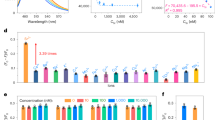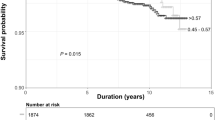Abstract
WE have reported1 that, following the ingestion of radioactive strontium by normal subjects, the specific activity in urine was appreciably greater than that in contemporary plasma. Consequently, we postulated that strontium existed in blood in two different chemical forms. We were unable, however, to find any difference in the specific activity of strontium in plasma ultrafiltrate compared with that of the non-dialysable fraction. This result prompted further experiments which have now revealed an artefact in the original measurements. Heparin, which is known to be a source of adventitious stable strontium2, was used in the collection of the blood. An incorrect allowance for this gave us falsely low values for the specific activity of plasma. A complete re-estimation of the relative specific activities of strontium in urine and plasma has therefore been made. The results of these measurements are given in Table 1. The probability of the ratio being greater than unity is 32 per cent, the 95 per cent confidence limits 0.84 and 1.40.
This is a preview of subscription content, access via your institution
Access options
Subscribe to this journal
Receive 51 print issues and online access
$199.00 per year
only $3.90 per issue
Buy this article
- Purchase on SpringerLink
- Instant access to full article PDF
Prices may be subject to local taxes which are calculated during checkout
Similar content being viewed by others
References
Carr, T. E. F., Harrison, G. E., Loutit, J. F., and Sutton, Alice, Nature, 195, 913 (1962).
Harrison, G. E., Raymond, W. H. A., and Thretheway, H. C., Clin. Sci., 14, 681 (1955).
Nordin, B. E. C. (personal communication).
Blau, M., Spencer, H., Swernov, J., and Laszlo, D., Science, 120, 1029 (1954).
Author information
Authors and Affiliations
Rights and permissions
About this article
Cite this article
CARR, T., HARRISON, G., LOUTIT, J. et al. Binding of Strontium in Blood. Nature 197, 710 (1963). https://doi.org/10.1038/197710a0
Issue Date:
DOI: https://doi.org/10.1038/197710a0



